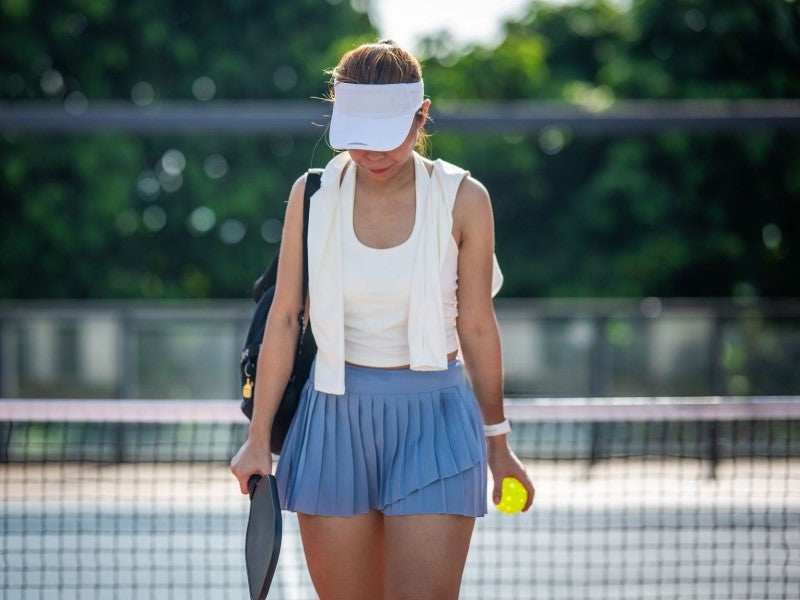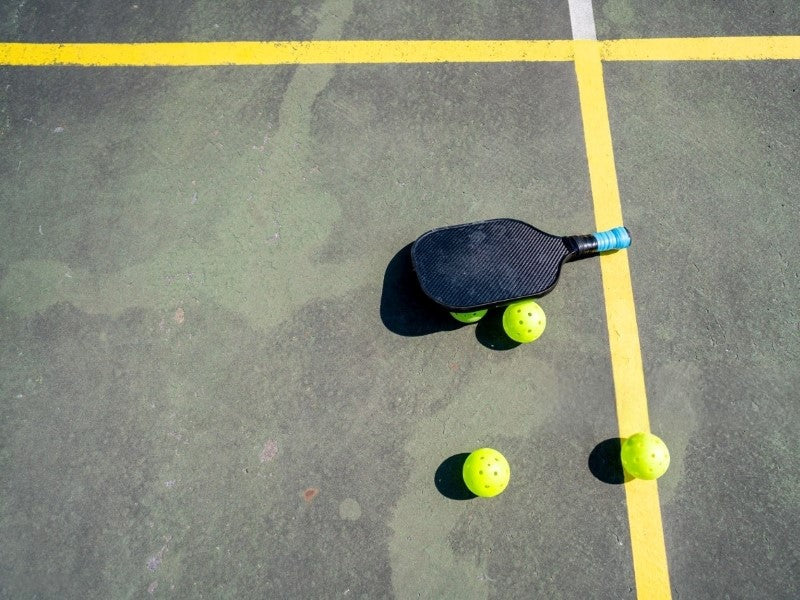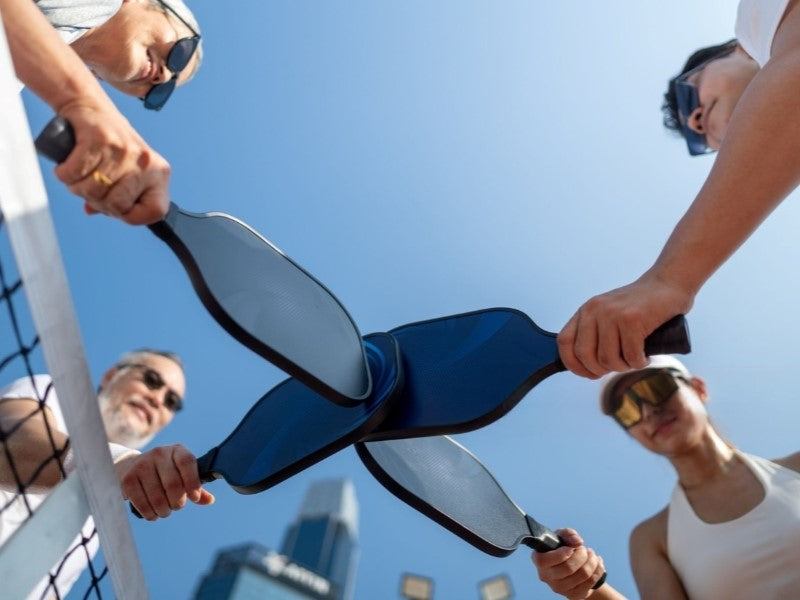Pickleball ranks among the world’s fastest-expanding sports. Combining elements of tennis, badminton, and ping-pong, it offers a unique blend of accessibility, competition, and fun. As more players join the pickleball craze, many wonder: what three sports are similar to pickleball? The answer lies in the shared DNA of other paddle or racket-based sports that feature similar court dynamics, stroke mechanics, and player strategies.
Tennis: The Original Paddle Sport Inspiration
Similarities to Pickleball
Tennis is often viewed as the parent sport of pickleball, and for good reason. Both games use a net, a service box, and similar court orientation. Players rally by hitting a ball over the net, aim to control shot placement, and score based on unforced errors or winners. The footwork, anticipation, and stroke strategies in pickleball mirror many aspects of tennis.
· Court awareness: Like tennis, pickleball requires players to position themselves effectively during rallies.
· Serving mechanics: Though underhand in pickleball, both sports initiate play through a serve.
· Singles and doubles formats: Players can enjoy both versions with similar rules for boundaries and scoring.
Key Differences
Despite their resemblance, several differences set pickleball apart from traditional tennis:
· Court size: Pickleball courts are much smaller (20x44 feet) than tennis courts.
· Ball type: Pickleball employs a perforated plastic ball that moves more slowly and bounces less high than a felt-covered tennis ball.
· Paddle vs. racket: Unlike tennis rackets, which have strings, pickleball paddles feature a solid surface.
· Rally speed: Pickleball often features quicker reflex-based exchanges at the net (especially in doubles).
Verdict
Those with tennis experience will find the shift to pickleball fairly natural. However, the shortened court and softer ball create a faster-paced, reflex-oriented style of play that makes pickleball more accessible to people of all ages and skill levels.

Paddle Tennis (Pop Tennis): The Underrated Cousin
Similarities to Pickleball
Paddle tennis—often called pop tennis—is arguably the closest cousin to pickleball. Played on a smaller court with a solid paddle and low-compression tennis ball, paddle tennis emphasizes net play, fast reflexes, and strategic shot placement. Its scoring rules and doubles structure also bear a strong similarity to pickleball.
· Underhand serve: Both sports feature underhand or drop serves.
· Paddle equipment: Players use solid paddles (no strings), similar to pickleball.
· Court layout: While paddle tennis courts are slightly larger, their size and pace are much closer to pickleball than traditional tennis.
Key Differences
· Ball composition: Pop tennis uses a depressurized tennis ball instead of a plastic ball.
· Court surface: Paddle tennis is typically played on courts with walls or enclosed fencing, whereas pickleball courts are open.
· Scoring rules: Paddle tennis scoring can follow either tennis or modified formats, which differ from pickleball’s unique side-out scoring.
Verdict
For those who enjoy pickleball but want a variation with a more tennis-like feel, paddle tennis offers a great alternative. The similar equipment and quick rallies make it a natural extension of pickleball skills.
Table Tennis (Ping-Pong): The Fastest Hand-Eye Challenge
Similarities to Pickleball
At first glance, table tennis may seem very different from pickleball, but a closer look reveals fascinating similarities in play dynamics and strategy:
· Reflex-based exchanges: Both sports reward fast reactions and quick directional changes.
· Spin techniques: Like pickleball, ping-pong players use topspin, backspin, and slices to control the ball.
· Compact court space: While table tennis is played on a table, both sports require managing a tight playing area and anticipating shot placement.
Key Differences
· Playing surface: Table tennis is contested on an elevated table rather than a court.
· Equipment size: Table tennis uses smaller paddles and balls, with spin having a much more pronounced impact.
· Scoring pace: Ping-pong games are typically shorter, with points scored quickly and rallies lasting seconds.
Verdict
Table tennis shares more strategic DNA with pickleball than most expect. Players with ping-pong experience often excel at the “kitchen” game (non-volley zone exchanges) in pickleball, thanks to their sharp reflexes and paddle control.
Beginner Crossover Tips for Pickleball Players
If you’re transitioning to pickleball from tennis, paddle tennis, or table tennis, you’ll find many skills transferable—such as paddle control, court awareness, and shot strategy. However, pickleball favors finesse over power, especially in close net exchanges. Shorter strokes, softer hands, and quick reflexes matter more than big swings. Focus on learning the non-volley zone (kitchen) rules, mastering the underhand serve, and developing control rather than force. With minor adjustments, your background in other paddle sports can give you a real edge in pickleball.

Honorable Mentions: Other Similar Paddle Sports
Badminton
While the racket and shuttlecock are very different, the court size, doubles format, and emphasis on agility make badminton a distant cousin to pickleball.
Platform Tennis
This sport, played outdoors in winter on heated courts, also utilizes solid paddles and values strategic play near the net.
Padel (Spanish Padel)
Popular in Europe and Latin America, padel is played in an enclosed court with glass walls. Like pickleball, it’s fast-paced, doubles-friendly, and accessible to beginners.
Why These Sports Feel Familiar to Pickleball Players
So, what three sports are similar to pickleball?
· Tennis: For court dynamics, serving, and foundational strokes
· Paddle Tennis: For equipment, pace, and doubles strategy
· Table Tennis: Focused on quick-reflex exchanges, spin techniques, and paddle handling
Each of these sports shares key elements—whether it's court size, paddle design, or rally speed—that align with the core experience of pickleball. If you're skilled in any of these three, you'll likely find yourself at home on the pickleball court.
FAQs: Pickleball and Similar Sports
1. Is pickleball simpler to pick up than tennis?
Most beginners find pickleball easier to learn than tennis. The smaller court, lighter paddle, slower ball speed, and underhand serve make pickleball more accessible, especially for older adults or people new to racket sports. That said, both sports have their own skill curves and strategic depth.
2. Is paddle tennis the same as padel?
No. Paddle tennis—known as pop tennis in the U.S.—is contested on a smaller, wall-free court and uses a low-compression tennis ball. Padel, which is popular in Spain and Latin America, is played in an enclosed court with glass walls and involves wall rebounds, much like squash. Both use solid paddles but are distinct in gameplay and court design.
3. Is pickleball more physically demanding than the other three?
It depends on your playing style and intensity. Tennis typically involves more running and longer rallies, making it more physically demanding. Pickleball can still be fast-paced and intense, but it's generally easier on the joints and more sustainable for casual or older players.
Pickleball is not just a sport—it’s part of a broader paddle sport ecosystem. Whether you're looking to cross-train, improve your skills, or simply try something new, exploring sports like tennis, paddle tennis, and table tennis can enhance your overall performance and enjoyment.
As pickleball continues to grow, so too does the curiosity about its roots and relatives. By understanding what makes these three sports similar, you'll gain more insight into the mechanics, strategy, and versatility of pickleball—and perhaps even discover a new favorite game along the way.









Leave a comment
This site is protected by hCaptcha and the hCaptcha Privacy Policy and Terms of Service apply.